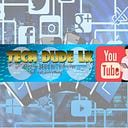What is NFT? (Non-Fungible Token)
A non-fungible token (NFT) is a unique and non-interchangeable unit of data stored on a blockchain, a form of digital ledger. NFTs can be associated with reproducible digital files such as photos, videos, and audio.
NFTs use a digital ledger to provide a public certificate of authenticity or proof of ownership, but do not restrict the sharing or copying of the underlying digital files. The lack of interchangeability (fungibility) distinguishes NFTs from blockchain cryptocurrencies, such as Bitcoin.
Does NFT have any copyright information?
“All copyright and other rights are reserved and not granted”
Ownership of an NFT does not inherently grant copyright or intellectual property rights to whatever digital asset the token represents.
While someone may sell an NFT representing their work, the buyer will not necessarily receive copyright privileges when ownership of the NFT is changed and so the original owner is allowed to create more NFTs of the same work. In that sense, an NFT is merely a proof of ownership that is separate from a copyright.
According to legal scholar Rebecca Tushnet, “In one sense, the purchaser acquires whatever the art world thinks they have acquired. They definitely do not own the copyright to the underlying work unless it is explicitly transferred.”
In practice, NFT purchasers do not generally acquire the copyright of the underlying artwork
Technology applications of NFT — What can we use as a NFT
The unique identity and ownership of an NFT is verifiable via the blockchain ledger. Ownership of the NFT is often associated with a license to use the underlying digital asset, but generally does not confer copyright to the buyer.
We can associate NFT with Digital Arts, Games, Musics, Films & any digital media.
Digital Arts
Digital art was an early use case for NFTs, because of the blockchain’s ability to assure the unique signature and ownership of NFTs.
Blockchain technology has also been used to publicly register and authenticate preexisting physical artworks to differentiate them from forgeries and verify their ownership via physical trackers or labels.
Some NFT collections, including EtherRocks and CryptoPunks are examples of generative art, where many images can be created by assembling a selection of simple picture components in different combinations.
Games
NFTs can be used to represent in-game assets, such as digital plots of land, which are controlled by the user instead of the game developer. NFTs allow assets to be traded on third-party marketplaces without permission from the game developer.
In October 2021, developer Valve banned applications that use blockchain technology or NFTs to exchange value or game artifacts from their Steam platform.
In December 2021, Ubisoft announced Ubisoft Quartz, “an NFT initiative which allows people to buy artificially scarce digital items using cryptocurrency”. The announcement has raised significant criticism, with 96% dislike ratio over the YouTube announcement video, which has been unlisted since then. Some Ubisoft Developers have also raised their concern over the announcement.
Music
Blockchain and the technology enabling the network have given the opportunity for musicians to tokenize and publish their work as non-fungible tokens.
As their popularity grew in 2021, NFTs were used by artists and touring musicians to recuperate lost income due to the 2020 COVID-19 pandemic. In February 2021, NFTs reportedly generated around $25 million within the music industry.
Film
In May 2018, 20th Century Fox partnered with Atom Tickets and released limited-edition Deadpool 2 digital posters to promote the film. They were available from OpenSea and the GFT exchange.
In March 2021 Adam Benzine’s 2015 documentary Claude Lanzmann: Spectres of the Shoah became the first motion picture and documentary film to be auctioned as an NFT.
What kind of Blockchains can use with NFT?
Ethereum
ERC-721 was the first standard for representing non-fungible digital assets on the Ethereum blockchain. ERC-721 is an inheritable Solidity smart contract standard, meaning that developers can create new ERC-721-compliant contracts by importing them from the OpenZeppelin library. ERC-721 provides core methods that allow tracking the owner of a unique identifier, as well as a permissioned way for the owner to transfer the asset to others.
Bitcoin Cash
Bitcoin Cash is a cryptocurrency that is a fork of Bitcoin. Bitcoin Cash is a spin-off or altcoin that was created in 2017. It supports NFTs and powers the Juungle NFT marketplace.
Cardano
Cardano introduced native tokens that enable the creation of NFTs without smart contracts with its March 2021 update. Cardano NFT marketplaces include CNFT and Theos.
Flow
The Flow blockchain, which uses a proof of stake consensus model, supports NFTs. CryptoKitties plans to switch from Ethereum to Flow in the future.
GoChain
GoChain, a blockchain which bills itself as ‘eco-friendly’, powers the Zeromint NFT marketplace and the VeVe app.
Solana
Solana is a public blockchain platform. It achieves consensus using the proof of stake mechanism. Its internal cryptocurrency is SOL. The Solana blockchain also supports non-fungible tokens.
Tezos
Tezos is a blockchain network that operates on proof of stake and supports the sale of NFT art.
Issues and criticisms of NFT
Storage off-chain
NFTs involving digital art generally do not store the file on the blockchain due to its size. The token functions in a way more similar to a certificate of ownership, with a web address pointing to the piece of art in question, making the art still subject to link rot.
Because NFTs are functionally separate from the underlying artworks, anybody can easily save a copy of an NFT’s image, popularly through a right click.
NFT supporters disparage this duplication of NFT artwork as a “right-clicker mentality”, with one collector comparing the value of a purchased NFT to that of a status symbol “to show off that they can afford to pay that much”
Environmental concerns
NFT purchases and sales are enmeshed in a controversy regarding the high energy usage, and consequent greenhouse gas emissions, associated with blockchain transactions.
A major aspect of this is the proof-of-work protocol required to regulate and verify blockchain transactions on networks such as Ethereum, which consumes a large amount of electricity estimating the carbon footprint of a given NFT transaction involves a variety of assumptions about the manner in which that transaction is set up on the blockchain, the economic behavior of blockchain miners (and the energy demands of their mining equipment), as well as the amount of renewable energy being used on these networks.
Artist and buyer fees
Sales platforms charge artists and buyers fees for minting, listing, claiming and secondary sales.
Analysis of NFT markets in March 2021, in the immediate aftermath of Beeple’s “Everydays: the First 5000 Days” selling for US$69.3 million, found that most NFT artworks were selling for less than $200, with a third selling for less than $100.
Those selling below $100 were paying network usage fees between 72.5 and 157.5 per cent of that amount, meaning that such artists were on average paying more money in fees than they were making in sales.
Plagiarism and fraud
There have been examples of “artists having their work copied without permission” and sold as an NFT.
After the artist Qing Han died in 2020, her identity was assumed by a fraudster and a number of her works became available for purchase as NFTs. Similarly, a seller posing as Banksy succeeded in selling an NFT supposedly made by the artist for $336,000 in 2021; with the seller in this case refunding the money after the case drew media attention.
A process known as “sleepminting” can also allow a fraudster to mint an NFT in an artist’s wallet and transfer it back to their own account without the artist becoming aware. This allowed a white hat hacker to mint a fraudulent NFT that had seemingly originated from the wallet of the artist Beeple.
The BBC reported a case of insider trading when an employee of the NFT marketplace OpenSea bought specific NFTs before they were launched, with the prior knowledge they would be promoted on the company’s home page. NFT trading is an unregulated market that has no legal recourse for such abuses.
In their announcement of developing NFT support for the graphics editor Photoshop, Adobe proposed creating an InterPlanetary File System database as an alternative means of establishing authenticity for digital works.

